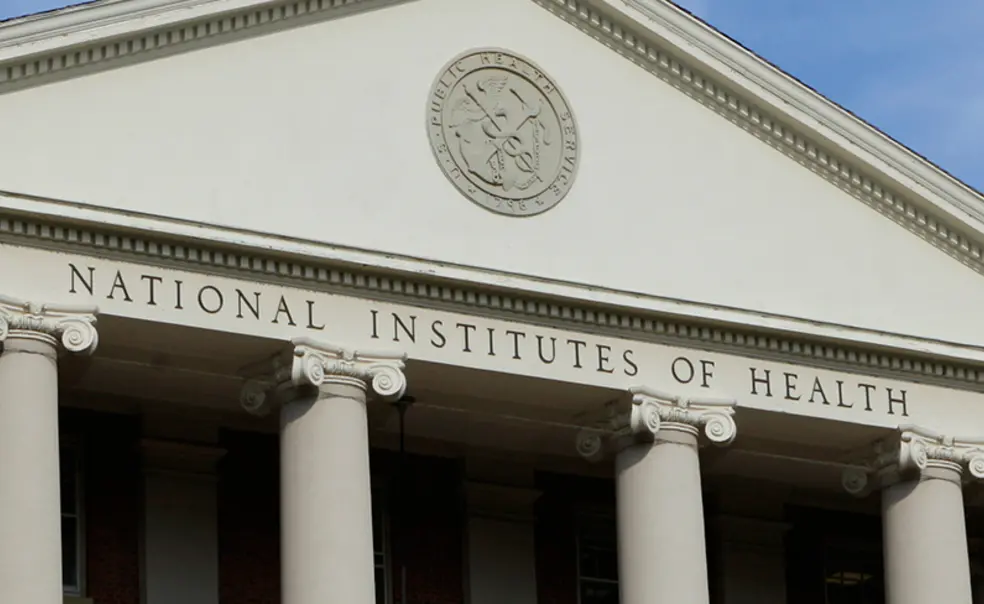Proposed Caps to NIH Funding Could Hamper Research at Princeton
‘The system is not broken, so the attempt to fix it is bewildering,’ says Dean Michael Gordin
Editor’s note: This story has been updated from its original version with additional reporting.
Although it is unlikely that anything appetizing comes out of the Kang Lab, the research hub in Thomas Laboratory on the southern end of campus, molecular biology professor Yibin Kang compares what goes on there to the operation of a pastry shop.
Bakers have certain direct costs — eggs, flour, sugar — but also many indirect costs, such as electricity for the mixers and gas for the ovens. Both direct and indirect costs are essential to baking a pastry. The same is true in a scientific research lab, which Kang analogizes to a small business.
The Kang Lab studies the molecular changes that cause cancers to metastasize, specifically breast cancer, which kills more than 40,000 American women every year. It is a big undertaking, employing the talents of up to a dozen Ph.D. students and postdoctoral fellows, along with a lab manager and two technicians, not to mention more than half a dozen undergraduates who might be working on projects there. Kang’s direct costs include the supplies and materials his team uses in their experiments, as well as the salaries for his postdocs. His indirect costs, Kang tells PAW, include basics such as heat, electricity, and water but are also much more extensive: laboratory space, equipment maintenance, high speed computing, legal and regulatory compliance, cyber security, and salaries for the administrative support staff.
“In research, our ‘product’ is discoveries, and some of those discoveries could lead to new medicines for cancer patients,” Kang said in a recent interview with the University. “And in universities, another of our products is a trained workforce — the next generation of scientists.”
A directive from the Trump administration, which would sharply limit indirect costs the NIH will reimburse, could cripple scientific research at Princeton and other American universities, Kang and others warn. Not only could it curtail possibly groundbreaking scientific breakthroughs, it could also weaken an engine driving the country’s economic dynamism and turn a generation of young people away from the sciences, with consequences that could be felt for decades.
In addition to being compensated for their direct costs, NIH grant recipients had historically negotiated how much of their indirect costs the government would also reimburse. The cap proposed by the Trump administration would limit indirect research costs to 15%. Princeton’s indirect costs for NIH grants were 64% as of July 2024, a figure that is comparable to other large national research universities, including Harvard and Yale.
Although the cap was scheduled to take effect on Feb. 10, a federal district court judge has enjoined the NIH from implementing it while he considers whether to grant a permanent injunction. Attorneys general from 22 states sued to stop the cap, along with groups representing colleges and universities. Provost Jennifer Rexford ’91 submitted a declaration on behalf of the University in support of the suit.
Princeton received $58 million in research funding from NIH in fiscal year 2023. That figure has risen by $12 million over the last seven years, much of it during the first Trump administration. More than half a dozen University departments receive NIH grants, funding research into cancer treatment, mental health, child well-being, antibiotics, machine learning, and genetic engineering, among other areas.
Princeton currently has 199 active NIH-funded grants, many running for multiple years. Collectively, they make up 22% of the University’s research portfolio. In many cases, Princeton also collaborates with other universities on joint projects.
The NIH has claimed that the caps would save more than $4 billion a year. According to The New York Times, NIH research grants already are about $1 billion below their level last year.
However, faculty and administrators at Princeton warned that the cuts could hamper research and innovation.
“It is going to undermine not only research by students and young researchers, but ultimately impact America’s research leadership in the world,” says Yiguang Ju, a professor of mechanical and aerospace engineering.
“Federal funding is the lifeblood of scientific research,” professor Joshua Akey, at the Lewis-Sigler Institute of Integrative Genomics, wrote in a Feb. 10 statement to The Daily Princetonian.
The Trump administration has justified the NIH cap by claiming, without evidence, that current levels of reimbursement for indirect research costs are excessive and possibly fraudulent. Posting on X, the social media site he owns, billionaire tech mogul Elon Musk, head of an administration group called the Department of Government Efficiency, wrote, “Can you believe that universities with tens of billions in endowments were siphoning off 60% of research award money for ‘overhead’? What a ripoff!”
University officials counter that the indirect cost rates cited in the press are misleading, and that the endowment already helps underwrite scientific research that takes place on campus.
An article published Feb. 18 on the website of the Office of the Dean for Research explains that the reported indirect rate of 64% does not mean that 64 cents of every research dollar paid to Princeton goes to overhead. Instead, only a portion of the direct costs of research are subject to the indirect reimbursement rate. In practice, the University says, only 27 cents of every NIH research dollar cover indirect costs.
Furthermore, the University already spends a portion of its endowment to defer the cost of research, Dean of the College Michael Gordin tells PAW.
“Princeton uses the endowment to pay the salaries of the faculty who are doing the research,” Gordin says. “We build the buildings and laboratories out of the endowment. We build and maintain the libraries that researchers use. Scientific research is a collaboration between the federal government and the University. Neither of us can do the science alone. We need to cooperate for this to work.”
If the NIH were to cap its reimbursement of indirect costs at just 15%, Gordin says, much of the scientific research being conducted here would be sharply curtailed and some would stop altogether.
“The consequences would be severe, because if we want to do the science, we still have to do things like keep the heat on and the electricity running. We would have to pay that out of the endowment, which means we'd have less money to do everything else. We would have less money to attract and support leading faculty. We'd have less ability to sustain undergraduate students on financial aid,” Gordin said.
Princeton administrators have tried to inform and reassure the University community while acknowledging that the situation is evolving quickly and much is not yet known. The Office of the Dean for Research has posted new pages on its website attempting to provide information about recent federal funding changes and asking researchers to pass along any stop-work orders they may receive from the government. On Feb. 27, the Office of Human Resources also added a page to its website attempting to provide the latest information on federal executive orders and policy changes that might affect the University community.
In a letter to the Princeton community on Jan. 29, President Christopher Eisgruber ’83 wrote, “We are proceeding carefully to ensure that the steps we take are sensitive to the needs of our community, consistent across the University, and in compliance with applicable laws. As part of this process, we are also exploring measures to ensure continuity of operations and programs should temporary interruptions to funding occur.”
The NIH reimbursement caps are only one of several actions taken in the first weeks of the Trump administration that have University officials concerned. In response to administration efforts to root out efforts at promoting diversity, equity, and inclusion (DEI), the Office for the Dean for Research posted a notice stating that the University Office of Science was immediately ending its requirement that “Promoting Inclusive and Equitable Research” plans be included with all research proposals. Concerns have also been expressed about changes in U.S. immigration policy that could affect some students and faculty, as well as proposals to increase the tax on the endowment.
At Princeton and elsewhere, the long-term consequences of curtailing federal support for scientific research extends beyond losing promising medical breakthroughs, both Kang and Gordin say.
“It will create a generational gap in the talent pool,” Kang predicts, as foreign researchers stop coming to American universities and U.S. students leave the sciences to pursue other career paths. Once gone, those students cannot easily be recruited back. “I think the [reimbursement] system probably could be improved, but it means the concerted efforts of all parties to come up with solutions to make the system more efficient, without harming the overall enterprise.”
If Kang likens his research lab to a pastry shop, Gordin sees it more like a goose laying golden eggs.
“We have a very highly functioning scientific and technological apparatus in this country,” he says. “There's a reason why young scientists from all over the world come here for graduate school or to study as undergraduates. It's because they get the education here that helps them do science at a level they could not find elsewhere. Many of those students stay in the U.S. and enrich our own community, or they build networks globally. That's an enormous source of soft power for the United States. The system is not broken, so the attempt to fix it is honestly bewildering to me.”











No responses yet